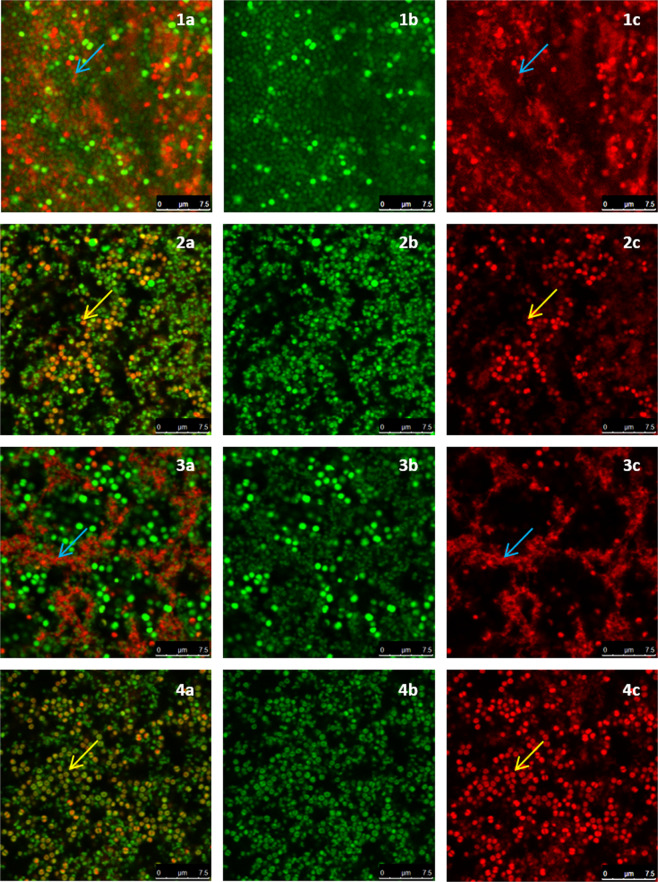Figure 6.
Confocal images of dispersed S. aureus biofilms. (a) combined channel; (b) SYTO 9 channel; (c) Promidium Iodide channel; (1) control biofilm; (2) dispersed with 40 mM D-AA (40 mM D-Asp and 40 mM D-Glu); (3) dispersed with Cip; (4) dispersed with 40 mM D-AA and 8 MLC Cip; blue arrow) presence of intercellular eDNA; yellow arrow) lack of intercellular eDNA. (1) Untreated S. aureus biofilms are reinforced by an organised honeycomb like meshwork made of interconnected intercellular eDNA. eDNA forms a filamentous mesh like structure within the biofilm and surrounds all cells. (2) Biofilms dispersed with D-AA lack majority of the eDNA. The pan-biofilm eDNA network is lost, any remaining eDNA is likely to be that entrapped between other matrix substances. (3) Presence of eDNA networks provides structure to persisting cells in biofilms treated with Cip on its own. (4) Biofilm treated with a combination of D-AA and 8 MLC Cip lack in eDNA meshwork structure and have minimal eDNA; eDNA = extracellular DNA; eDNA = extracellular DNA; D-AA = 40 mM D-Aspartic acid and 40 mM D-Glutamic acid; x MLC = x times minimum lethal concentration; Cip = ciprofloxacin.

